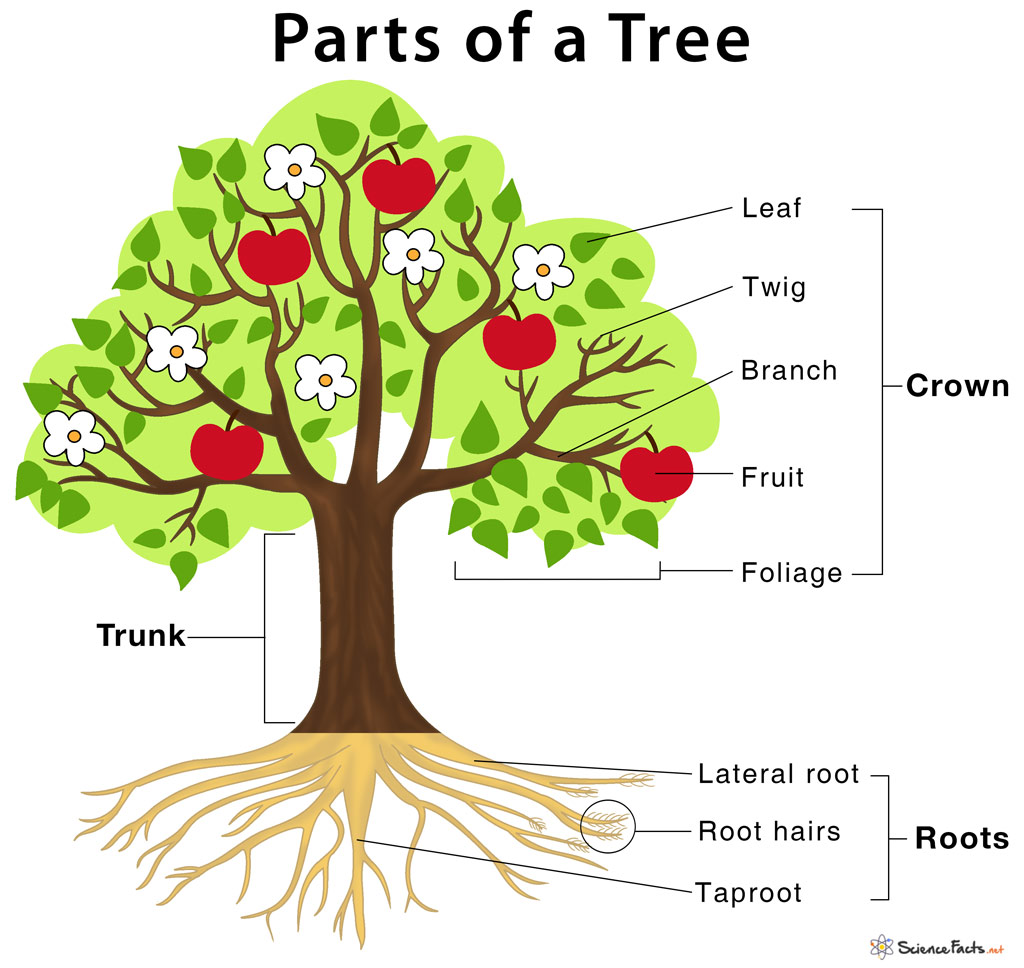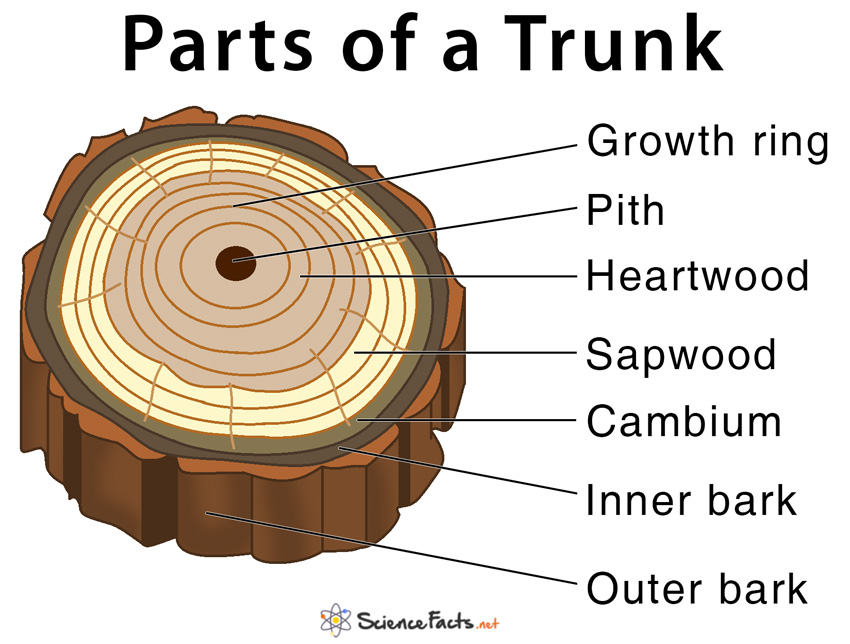
A mature tree has three basic parts: 1) roots, 2) crown, and 3) trunk or bole. Although the structure of these parts may vary based on the altitude and geographical position of the tree, each of them performs distinct functions.
Roots are the underground part of a tree. The primary root or taproots grow horizontally downwards, with lateral roots arising from the taproot. Each root is surrounded by many, tiny root hairs that increase their area of absorption.
They are the topmost portion of a tree that may vary widely based on their shapes and sizes. The crown is made up of the following parts:
i) Leaves: Usually the green part of a plant that remains attached to the crown. Leaves are also known as the factories of a tree. A collection of green leaves is called foliage.
ii) Branches: The first thick branches of a tree arising from the central wooden axis are called boughs while the smallest terminal branches of a tree are known as twigs.
iii) Flowers: The most colorful and attractive part of the plant that remains attached to the terminal branches. It later develops into a fruit.
iv) Fruit: The edible part of the plant that develops from the flowers. It contains the seed that gives rise to a new plant.
The trunk is the central wooden axis of the crown that is typically brownish. They contain a network of small tubes that runs between the roots and the leaves, thus acting as the plumbing system in the plant. A typical tree trunk shows six parts:

i) Outer bark: The outermost layer of the trunk, branches, and twigs of the tree. The bark of some plants has a characteristic odor and scent.
ii) Cambium: The thin layer of living tissues consisting of growing cells that are present just inside the bark. Every season they add a new layer to its trunk, thus producing a visible annual growth ring in most trees.
iii) Sapwood or xylem: The youngest layers of wood that are made up of a network of living cells. Over the years, the inner layers of sapwood die.
iv) Heartwood: The older and dead xylem cells found close to the center of the trunk and thus are usually darker than xylem. They are filled with stored sugar, oils, and dyes.
v) Pith: The tiny dark spot present at the center of the tree trunk that is highly protected from damage by wind, insects, and animals.
vi) Inner bark or phloem: The pipeline located between the outer bark and the cambium of the tree trunk.